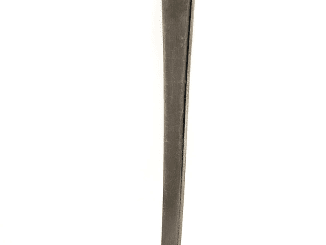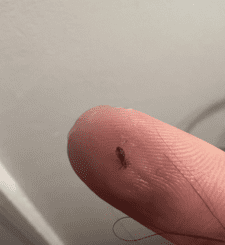
Split ends are the frayed, forked tips of hair strands—known in dermatology as trichoptilosis. When the outer cuticle gets worn down by heat, friction, weather, or chemicals, the inner fiber unravels like a rope, leaving hair dull, rough, and hard to style. The fix isn’t a single miracle product; it’s a smart routine that hydrates, protects, and trims. Ready to keep those ends neat and glossy? Let’s dive in.
What Actually Causes Split Ends?
Several everyday habits gang up on your hair. Excess heat from blow-dryers, straighteners, and curlers weakens the cuticle. Dry climates and sun pull moisture out of strands. Harsh formulas and chemical services like bleach or relaxers roughen the surface. Mechanical stress from rough towel-drying, tight elastics, or aggressive brushing adds even more damage. Product build-up can block moisture from penetrating the shaft, leaving strands thirsty.
Think of the cuticle as roof shingles. Once a few lift or chip away, wind and water sneak in and the whole roof suffers. Your job is to keep those shingles lying flat.
Start Smart: Shampoo and Conditioner That Protect the Ends
Your shampoo should cleanse the scalp while respecting your ends. Work shampoo mainly at the roots and let the lather glide through the lengths. Always follow with a nourishing conditioner concentrated on the final third of your hair. Swap a rough cotton towel for a microfiber towel to pat and squeeze instead of rubbing. Choose dermatologically tested formulas with clinically proven actives that target dryness and damage. This way you’ll leave the shower with a clean scalp, hydrated lengths, and less friction.
Trim the Right Way: Salon Scissors Only
DIY snips are tempting, but blunt household scissors crush the cuticle, creating a ragged edge that re-splits as soon as you comb. Book a professional trim and ask to cut about one to one and a half inches above the last visible split. This removes the entire damaged zone so new splits don’t leapfrog back in a week. Tiny, consistent trims every 8–12 weeks are far better than waiting for a big chop.
Moisture Therapy: Oils, Serums, and Leave-Ins
Dryness is the spark; moisture is the extinguisher. Build a hydration routine with weekly pre-wash oiling using coconut, argan, almond, or jojoba. Follow with a rinse-out conditioner after every wash to soften and detangle. Add a leave-in conditioner or serum on damp ends to lock in water and add slip. Whenever possible, air-dry your hair. If you must blow-dry, keep the heat low and the nozzle moving.
Think “water first, oil last”: hydrate with water-based products, then seal with a light oil so the moisture doesn’t evaporate.
Video : Split Ends: Dermatologist Explains Damaged Hair Causes, Treatments, Prevention, & More!
Silicone-Free Conditioner Sessions
Silicones can make hair feel instantly sleek, but they often lead to build-up and thirstier strands. Rotate in a silicone-free deep conditioner two to three times a month. Apply to clean, damp hair from mid-lengths to ends, clip up, and wait for several minutes. Rinse gently with cool water to help flatten the cuticle and keep the shine. Your hair should feel supple, not coated.
Heat and Chemicals: Minimize, Shield, and Space Out
Hot tools and chemical services are like sunbathing for your hair—fun short term, costly long term. If you can’t skip them, always use a heat protectant spray. Limit direct heat to one or two passes per section and stick to moderate temperatures. Space out coloring, bleaching, or relaxing, and follow with bond-building or protein-moisture treatments. No tool should touch your strands without protection first.
Friction Fixes: Satin, Silk, and Gentle Tools
Small frictions cause big splits. Sleep on silk or satin pillowcases so hair glides instead of snags. Swap tight elastics for spiral coils or scrunchies. Detangle from the ends upward with a wide-tooth comb while hair is damp and conditioned. Avoid constant rubbing from hats, scarves, or rough fabrics. Your ends should live a cushy life—treat them like delicate fabric.
Weekly Oiling Ritual for Resilience
A weekly oil treatment is a classic because it works. Warm coconut, argan, olive, or jojoba oil between your palms and smooth from mid-lengths to ends. Leave it on for an hour or overnight with a silk cap, then shampoo gently. This fortifies the cuticle, reduces breakage, and adds natural shine.
DIY Masks That Actually Help
Simple, balanced masks make a difference. Mix honey and olive oil for softness. Yogurt and aloe bring soothing hydration and light protein. Banana blended with coconut milk adds slip, vitamins, and gloss. Apply to damp hair for 15–20 minutes, then rinse thoroughly. Stick to creamy mixes, not harsh scrubs—your cuticle isn’t a frying pan.
Daily Care Blueprint
Wash two to three times per week depending on scalp oiliness, but condition every wash. Use leave-in products on damp ends and add a drop of oil when frizz appears. Heat style sparingly with protectant and air-dry when possible. Sleep on silk or satin and keep a microfiber towel handy. Trim regularly before splits travel upward.
Product Checklist for Split-End-Prone Hair
Your essentials include a gentle shampoo, a lightweight but rich conditioner, a silicone-free deep conditioner, a leave-in or serum, a heat protectant, a light oil, a microfiber towel, a wide-tooth comb, and a silk or satin pillowcase. If something leaves your hair squeaky or rough, it isn’t the right product.
When to See a Pro
If splits climb rapidly, your hair feels gummy when wet, or breakage continues despite care, visit a professional stylist. You may need stronger treatments, a corrective trim, or adjustments to your routine.
Video : Split Ends Home Remedies: Natural Treatment For Split Ends | Hair Care Tips | The Health Site
Conclusion
Split ends form when your cuticle frays, and they will not fuse back together. The only cure is prevention plus regular removal. Cleanse gently, condition deeply, moisturize consistently, avoid friction, limit heat, oil weekly, and trim with professional scissors. With patience and consistency, you’ll keep your ends tidy, your strands glossy, and your styles lasting longer. Healthy hair is manageable hair, and it all starts with how you treat those fragile tips.


